Aphrodite Guises
Venus Barbata
I see two different representations with the Venus Barbata. The first is the duality of the gods and goddesses. Just as there were twins in the cosmic/Orphic egg, the dual masculine and feminine energy exists incarnate within each god and goddess.
Second, I see the honoring of the transvestite priests and hermaphrodites of Aphrodite. As Barbata means hair on cheeks and chin, it could also be bearded ladies or those suffering from hirsuitism. Or, as a further stretch, she-wolves.
Third, I see this almost a disguise for the embodied Aphrodite when she wants to go incognito. The perfect ancient ruse would be dressed as a man and going about her business un-escorted and un-accosted.
Finally, as kink or sex play. I see role-playing in the Venus Barbata.
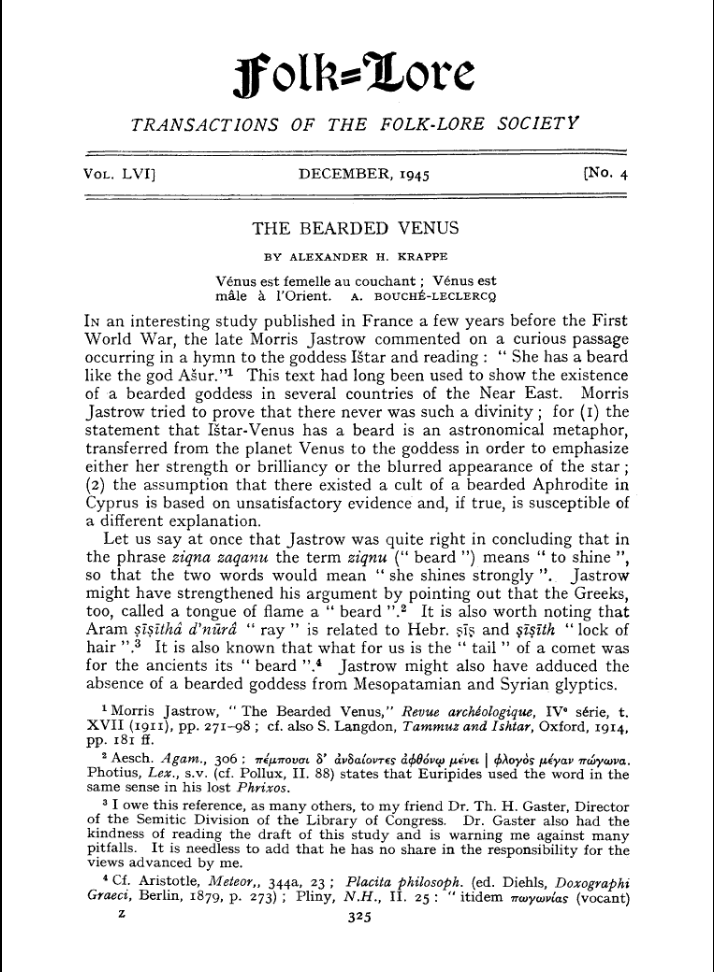
Aphrodite Statuary
Another interesting consideration regarding Aphrodite is the statuary. There is, of course, accounting for individual tastes, different eras, varying regional preferences, etc. But what if there were fradulent statues of Aphrodite? I can imagine entire ancient cottage industries where local women could have their image made in the form of Aphrodite. Perhaps they were used for love spells or to petition Aphrodite or even to impress a husband or lover.
And, as mentioned above, Aphrodite’s priests may have varied her look to protect her anonymity incarnate.
However, Aphrodite was also dealing with jealous goddesses, and it is not that far of a stretch to imagine an angry Hera ordering the distribution of idols not made in Aphrodite’s image, but perhaps her own. A more intriguing candidate for the idol switch might be the goddess Hestia/Vesta. In the Egyptian pantheon, she is known as Anaka or Anuket. In Greek, her name become Anoukis. Given that her Egyptian name means the one who embraces, I would imagine she is a hugger or, in a vampyre mythos, she would be a new partner (likely kine or hybrid) that has gotten close to an immortal and maneuvered her way into being his new primary partner or favorite. In the Greek Mythos, Hestia won Zeus’s favor by promising to remain a virgin and devoted to him for life. This meant Aphrodite had no power over her but also that Hestia could not marry or be in a sexual relationship with anyone. Anukis/Anuket was originally accepted as a deity by the Nubians.
Since these are specifically Aphrodite idols, one could argue that the statue on the left is the fake Aphrodite because she may have more wealth and can afford adornment. However, the idol on the right seems to be improvising the headdress of the other idol. She is using blues and grays instead of the royal crimson. Around her head are red flowers. And instead of wearing gold, she has adorned herself with clay. It is certainly still striking but even the hair is a clue. Aphrodite is described as fair-haired. The clay of the idol on the right makes it seem as though perhaps a blonde muddied her hair for distinction but the idol is a brunette. And the idol on the right is missing the sun disk and horns that adorn the headdress on the left but has made the effort to mimic the placement of the sash and jewelry on the Aphrodite idol. The idol on the left looks annoyed, while the idol on the right looks to be in a state of kine bliss. There is no emotion in her face. This likely was a ploy to make Aphrodite’s image look more scornful or to resemble a certain person.
Aphrodite’s public hair is groomed into a perfect triangle, while the other idol has that area natural. There is also a red serpentine (perhaps two serpents) on the left side of the other idol, while I do not see that on the Aphrodite idol.
However, there is one trait of Aphrodite that the idol on the right could not replicate. Aphrodite has two different sized breasts to accommodate consorts that preferred larger breasts over smaller (or vice versa). It is what gave Aphrodite the reputation of being physically perfect. The breasts of the idol on the right are symmetrical and relatively same-sized. This would make me think she was a human “mimic.” The kine have flaws, but not in the way deities or royal bloodlines do. I have seen in historical photos attempts by those not of those lines to try to create either genetic issues (purposeful/selective breeding) or breakages to mimic those traits. I have also seen references to kine trying to alter or destroy those with marks of the “chosen.” In Greek and Roman art, Hestia is depicted as having asymmetrical eyes but the statue of Aphrodite has this asymmetry in a more pronounced way-even the eyebrow is raised. The other idol appears to have some of this also but it is not as pronounced. Again, her eyes are almost symmetrical. And in an Egyptian depiction of Anuket, she is shown having a headdress that is gray and blue-likely containing at least some ostrich feathers. Given that she is lacking any insignia or emblems, this would also mean she is neither divine nor royal so she was a kine/human doing some sort of light but important work in the temple or royal home–perhaps housework or personal assistant type to a priest since she later became known as a goddess of hearth and home (parallel fairy tale might be a step-sister from Cinderella). Within mythology texts, she is the keeper of the fire within a civic hall. Unlike Isis/Aphrodite, there are no temples or cults noted for Hestia/Vesta. This again would support that she was a human that gained the favor of a god or someone of great importance.
So my guess is that we are looking at idols of Aphrodite/Isis and Hestia/Anaka/Anuket.
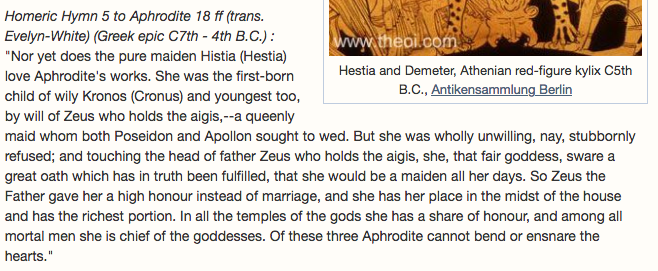
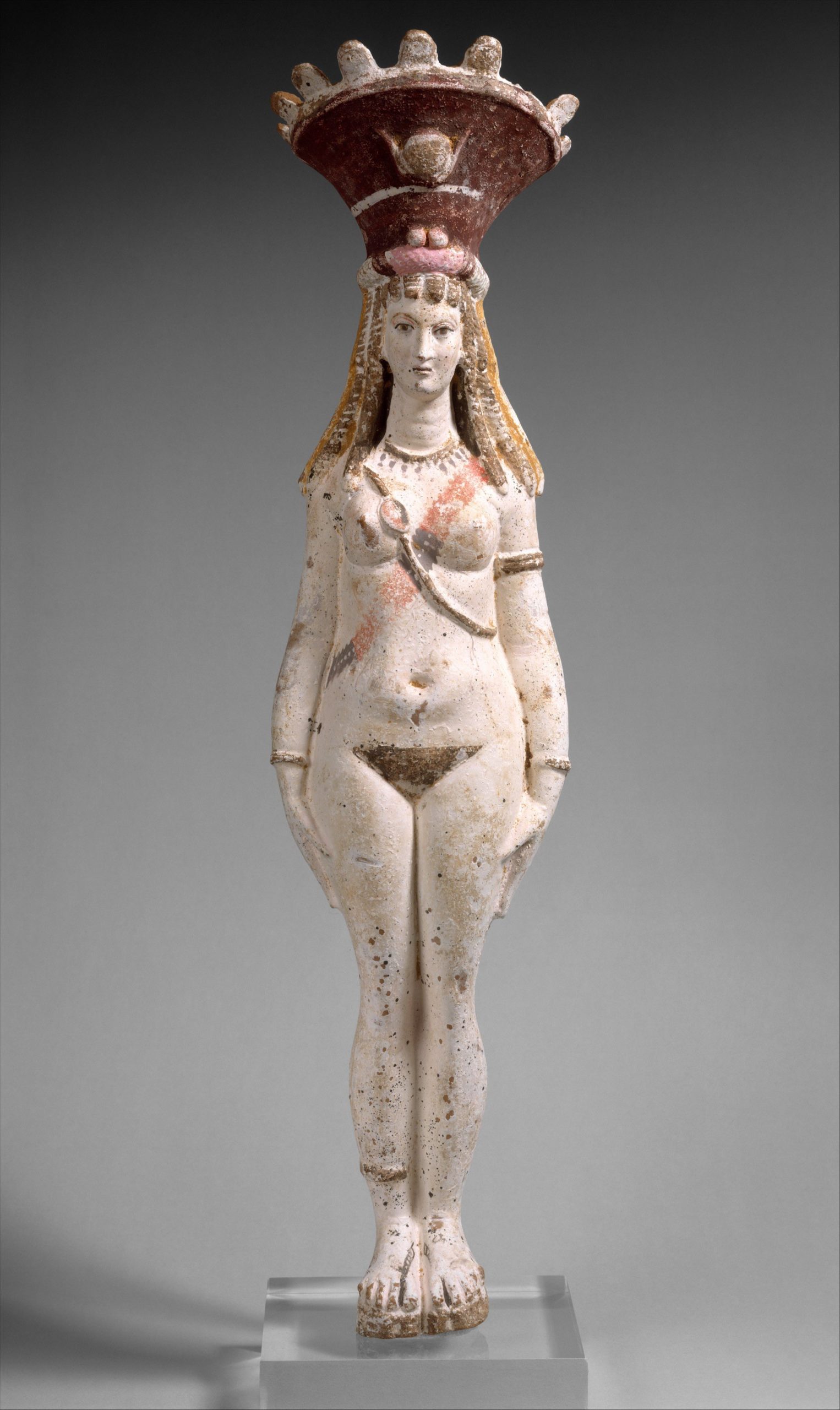

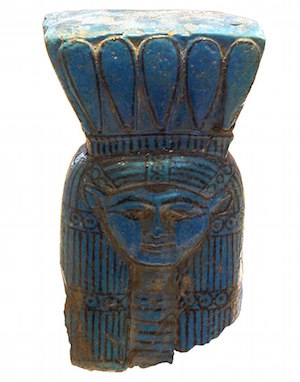
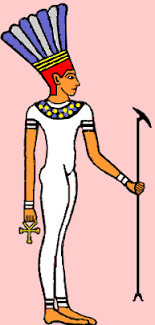
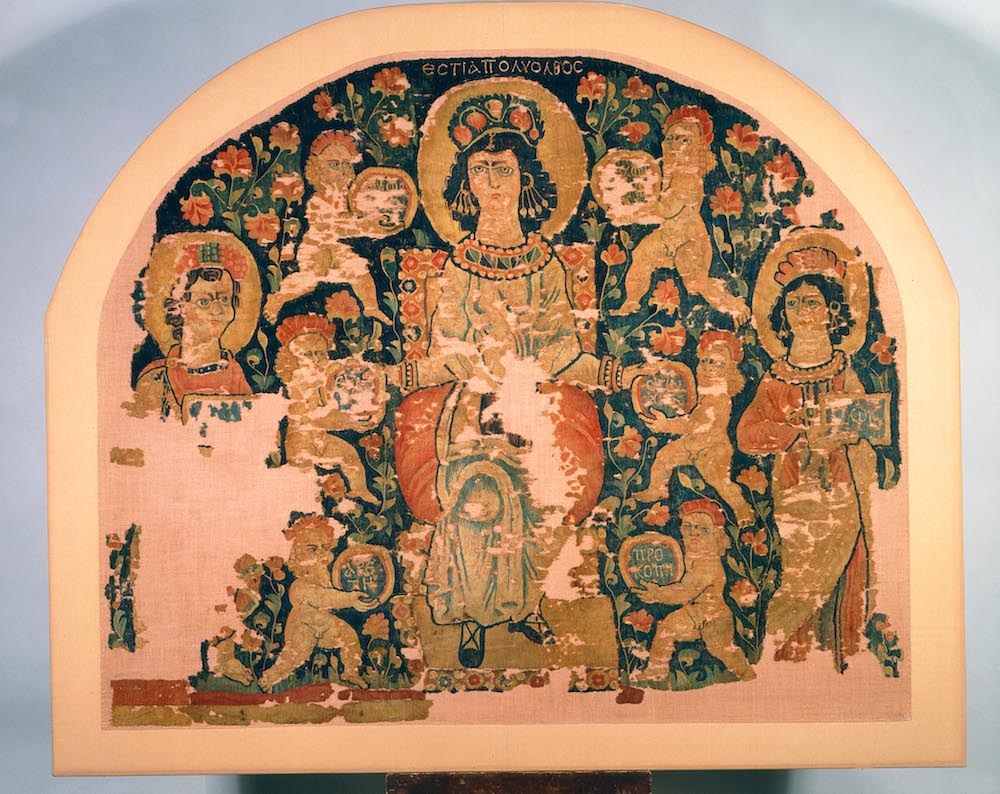
In my story, Gold ‘n Silver, with Anaka/Anuket being a river goddess, there was a plot against Isis/Aphrodite by the river goddesses Lethe and Hestia/Vestia and/or the nymphs to try to take her place or gain more power even through Anaka/Anuket was human. But ultimately, the foundation for the plot is pain, loss and revenge. The reasons for this are complex.
This was not the first time the gods and humans have tried to trick Aphrodite. Another instance was with the golden apple. Those who read the Greek version of the myth with Eris will notice elements similar to Sleeping Beauty. Eris is not invited to a wedding but throws a golden apple into the garden around the event. Inscribed on the apple is “to the most beautiful.” Hera, Athena and Aphrodite claimed the apple. Each goddess tries to bribe Paris and he ultimately gives the apple to Aphrodite. In return, he is given the most beautiful woman in the world-Helen. This leads to the Trojan War and the ultimate demise of Paris and Troy. Aphrodite is cited as partially responsible for the Trojan War-which she is injured in. During the battle, Diomedes cuts her wrist. Dione heals her but Zeus warns Aphrodite, despite being a war goddess, that she is not to get involved in warfare again. Many suffer and die during the Trojan War. One of these to suffer many losses was the Queen of Troy, Hecuba. This could certainly set the queen and her remaining children on a course for revenge.
https://blog.britishmuseum.org/women-and-goddesses-of-the-trojan-war/
We should not forget that Athena and Hera are also feeling the snub of Paris for not giving them the apple. Eris is the daughter of either Nyx and Erebus or Zeus and Hera. One of her children is Lethe. Which brings us back to why Lethe might plot against Aphrodite-and why humans might willingly involve themselves.
Another version of the story involves Bram and Eleanor with the silver branch but it is more difficult to make direct correlation to the other versions. Finally, there is a version with the sons of Tuirenn. Lugh had demanded golden apples from the Hesperides. This journey results in a curse placed on both the Tuatha de Danann and the sons/lines of Tuirenn. What no one stopped to see was that the golden apple was the apple of discord thrown into the mix by the goddess of discord. The Dutch refer to this as the twistappel (“strife-appel”). It is also called, “the original snub.” And this immediately makes me think of the snubbed-nose snake-which is referred to as the hog-nosed snake. That snake is found in the United States, Northern Mexico, South America and Madagascar. The Madagascar connection is interesting as that is often a location referenced for the island of Atlantis and might also be a potential location (or somewhere near it) for the Garden of Eden and its apples.
